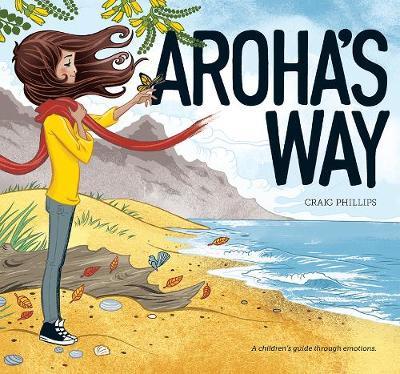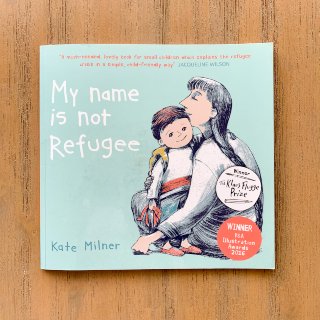Aroha’s Way
Free lesson plan, writing template and printable word-search puzzles for kids
Best suited to:
K – Year 6
KLAs covered:
English, PDH
Learning:
- uncomfortable emotions such as fear, apprehension, worrying thoughts and nervousness are normal and ok;
- everyone feels frightened, anxious, stuck and worried sometimes;
- we can learn to manage our uncomfortable emotions;
- talking to someone, deep breathing, moving our bodies and grounding ourselves in nature are all good strategies for calming our tricky feelings;
Need to know:
- Aroha is a Māori word meaning love or affection;
- the book is written in rhyme;
- we are not told how old Aroha is but she looks to be about 9-11 years old;
- Aroha uses belly breathing to calm her fear, exercise and movement to calm her anxiety, mindfully grounds herself and focuses on nature to manage her worrying thoughts and talks to someone she trusts when she feels stuck or worried;
- there are notes in the back of the book for parents and teachers which explain in more detail the strategies Aroha uses to manage her tricky feelings;
Discussion Questions (before reading):
I think this is a book which is best read without too much discussion beforehand.
- allow a few moments for children to look at the cover and title. For younger children, ask: what do you see? What do you think the book will be about?
- for younger children (K-Year 2): point out the author’s name and discuss the terms ‘author’ and ‘illustrator’. Why do you think there is only one name on the cover?
Discussion Questions (after reading):
- ask children what they thought about of the book. Did they like it? Not like it? Why? Which was their favourite page?
- what is this book about? (managing our feelings);
- why do you think the book is called ‘Aroha’s Way’? (it’s about Aroha’s way of managing her uncomfortable feelings);
- what were some of the feelings Aroha felt in the book? (worried, scared, not good, enough, stuck/anxious). Write the children’s answers on the classroom whiteboard;
- how did Aroha know she was feeling this way? What did it feel like in her body?
- ask the children: have you felt the way Aroha feels? When/what was happening when you felt that way?
- when you have had these uncomfortable feelings did you do anything to help yourself feel better? What did you do? (Write the children’s responses on the classroom whiteboard);
- tell the children that everyone has these feelings sometimes, whatever their age. Explain that adults feel these feelings too, that you (the teacher) feel them and that even when people seem confident and happy on the outside they can be feeling uncomfortable inside;
- ask: can you remember and describe some of the ways Aroha managed her uncomfortable feelings? Do you think these are good ideas? Why or why not?
- for older children (perhaps Year 3 and up): do you think you’re quite good at managing your uncomfortable feelings or not? Tell children many (most?) adults have trouble managing their uncomfortable feelings because they never learnt to do this as children. Ask: what is one strategy you think might help you that you’d like to try? Emphasise that these strategies work best when they are practised regularly over a long-ish period of time;
Activities
- children complete a wordsearch using vocabulary from the story;
- children write and/or draw a response to the story. They can draw or write about their favourite part or write about something they learnt from the story;
- children choose an uncomfortable emotion (fear, worry, anger, feeling not good enough, feeling stuck, sadness). They write or draw about how this emotion feels in their body (sickness in their tummy, a sore tummy, headache, sweaty hands or armpits, hard to talk, heart beating fast, can’t think, etc);
- children write about one way they might choose to manage their uncomfortable feelings and illustrate;
- during the course of a day, the class can practice some of the strategies Aroha uses. Take them outside and guide them to close their eyes and pay attention to their senses and the natural environment. What can they hear, smell and feel? With their eyes open, guide them to rest their attention on a tree, cloud or plant;
Years 3 – 6
- in small groups, pairs or on their own, children create a poster explaining the four ways Aroha uses to manage her uncomfortable emotions;
- children choose an uncomfortable emotion and write a poem about a time when they felt this emotion and how it felt in their body;
Free, printable word-search puzzles
These free printable word-search puzzles for kids are great for building and reinforcing the vocabulary used when you’re discussing Aroha’s Way.
There are three different puzzles in this file to enable you to differentiate the activity according to the needs of your students.
Free writing template
You can download and print our free writing template for use with Aroha’s Way here (PDF).







